No sooner have we started than we make the first scenic detour. This one is to Shoulder Pad Land.
I’ve been told that fitting needs to be done with the relevant shoulder pad in place – if I plan on keeping the shoulder pads that is. And although I’m no fan of footballer shoulders (that’s American football, not the World Cup variety), I thought maybe a sliver might give the jacket a more professional tailored look.
So to buy or to make. Well, as I had already cut out batting for the shoulder pads ages ago I thought I’d go down the homemade route. Isn’t it sign of better tailored garments anyway? She says snootily.
The only problem though…I’m not sure these homemade ones would be washable. Now my RTW trench‘s shoulder pads, while low-quality looking, is at least washable. And I hate garments that are dry-clean only. That was one reason I bought that particular RTW trench – it is machine washable. On the other hand, I’m not sure I’ll be able to find ready-made ones that are thin enough for my taste. So maybe I will make these detachable rather than sewn in.
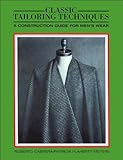
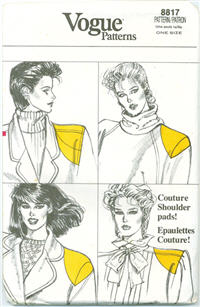 I’m using OOP Vogue 8817 for these shoulder pads. But as usual, I’m deviating from the pattern instruction to try out some fancy-schmancy instruction from my sewing books. This time it’s from Cabrera Meyers’ Classic Tailoring Techniques: Men’s Wear.
I’m using OOP Vogue 8817 for these shoulder pads. But as usual, I’m deviating from the pattern instruction to try out some fancy-schmancy instruction from my sewing books. This time it’s from Cabrera Meyers’ Classic Tailoring Techniques: Men’s Wear.
The V8817 instruction looked like it would have produced a hefty pad even for the thinnest, supposedly 1/4″ version.
So I…
- Removed one of the two layers of the smallest piece.
- Strip all the batting of the thin non-woven cover layers. (Did I use the right type of batting I wonder. These cover layers make it impossible to have smoothly transitioned layers.)
- Half each layer again.
- Feathered the layer edges for a smoother transition between the different sized layers.
The result looks more like the photo in the tailoring book.
Per that book I also replaced the hair canvas top and bottom layers with muslin – seems like it would feel nicer as canvas can be a bit scratchy to wear. And for pad stitching I ran these parallel to the concave shoulder edge like in the book rather than perpendicular like instructed by V8817.
Here’s how the finished pad compare with the foam pad from my dissected RTW trench:
And that concludes our detour to Shoulder Pad Land. You can wake up now!
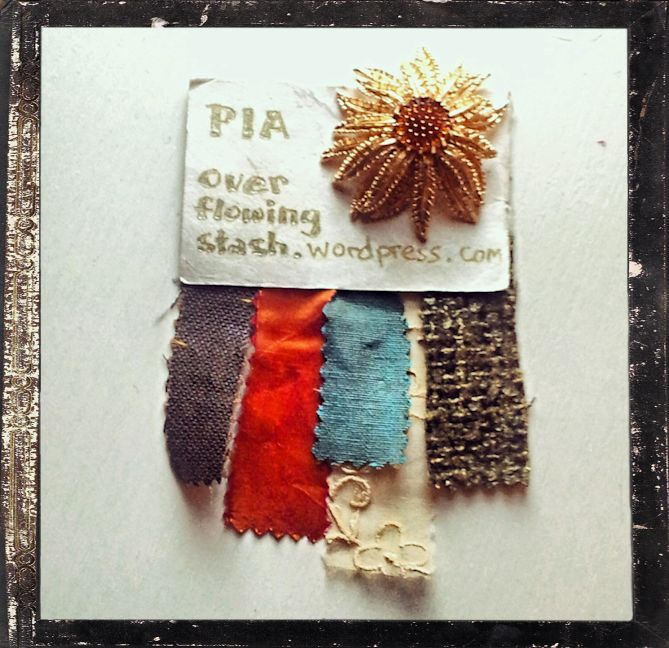

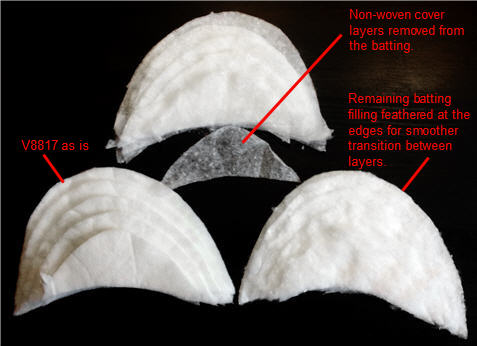
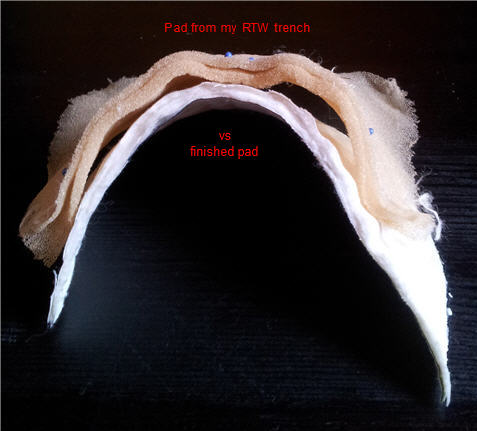
Seriously, this is quite the interesting and educational detour. I’ve read about making shoulder pads, but I am such a completely lazy sewcialist that I probably never will make my own. These looks perfect height!
I’ve got that OOP 8817 as well, but I can’t remember now if I ever used it. It was issued in the days of massive shoulder pads, so I’d be a bit suspicious of the end result. Getting the shoulder pads (and the sleeve cap) right is, I suspect what separates the sewing goats from the sewing sheep when it comes to tailored garments. I’ve been too cowardly to date to attempt this level of complexity since my sewing re-birth, so I’m looking forward to hearing more!.
I think I’ve only used this pattern one other time. And the result was a bit 80ish. Didn’t help that the pattern had slightly extended shoulders as well! Like your expression ‘sewing goats’ & ‘sewing sheep’ though I’m not exactly sure what you mean. Is it foolhardily adventurous vs gently grazing along?
I guess this must be a bit more localised an expression than I realised, sorry 🙂 … to separate the goats from the sheep. It just means if you introduce something a bit more demanding or lateral you will identify the people who are really thinking from those who are just following along. I forgot to mention in my previous response to this edition that your pads look a wee bit thin, at least in the photos. I think even in modern garments, outer wear pads are usually a bit more substantial. But I haven’t unpicked any garments so I’m certainly no expert, I’m just basing it on other literature and web based info. I have one of Claire Shaeffer’s blow by blow couture jacket patterns and although I haven’t sewn it (well of course not, ha ha, I “mind sew” about a hundred more garments each year than I actually SEW) she describes a pretty intricately layered pad. But you will be able to tell how it sits well before the pads becomes irretrievable anyway.
Goat vs sheep…Hahaha. Goats are also the ones to be found perching precariously on some ridiculously unreachable rock I found last time I was in UK&I’s country-side. Hope they all know how to get down! 😉
The pad I made is a bit on the anemic side – I think about 1/8″. Don’t know if it’ll compact more with age or not. I’m not too bothered as long as it gives the trench’s shoulder area a smooth look. I don’t particularly go by RTW or Couture standards if it doesn’t suit me! 😉
And I think I will probably make these detachable. Which means I can change my mind and replace with thicker pads if these get too thin.
I haven’t made a shoulder pad yet – I have some carefully taken out of a garment for inspection for when the day finally comes. Looking forward to seeing your finished garment.
To be honest, sometimes it does feel a bit overkill to make my own. Especially as some ready made ones have the advantage of being washable. But I suppose if it helps reduce that stash…I must have that batting for over 20 years now! :o)